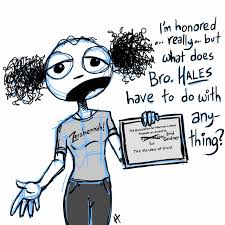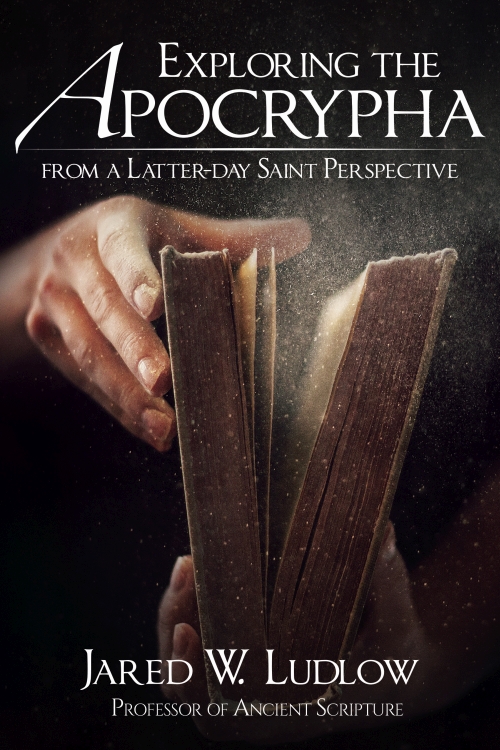Book Review: Perspectives on Mormon Theology – Apologetics, edited by
Blair G. Van Dyke and Loyd Isao Ericson, Greg Kofford Books
I am an apologist. Ever since joining the LDS Church at the age of
16, I’ve spent countless hours explaining, sharing and defending the
gospel of Jesus Christ. After my mission, I used to weekly go to the
Salt Lake Temple, where I would spend an hour talking gospel with the
anti-Mormon protester that handed out pamphlets outside the Temple
Square walls. Nibley’s works were amazing to me. I was a list member on
William Hamblin’s Ant-Mormon email list 25 years ago. I am a former
member of FAIRMormon, written articles for the More Good Foundation,
spent many hours on LDS.Net, have several articles on my own webpage,
gave a lecture on the Book off Mormon as an Ascension Text at Sunstone
Kirtland, blogged on the Gospel Doctrine lessons at my own blog, and a
permablogger here at Millennial Star.
That said, I went into this discussion on apologetics with an open
mind, eager to see what several LDS scholars thought. The book is a
series of essays on apologetics:
- Critical Foundations of Mormon Apologetics – Blair G. Van Dyke
- A Brief Defense of Apologetics – Daniel C. Peterson
- Boundary Maintenance that Pushes the Boundaries: Scriptural and Theological Insights from Apologetics – Neal Rappleye
- I Think, Therefore I Defend – Michael R. Ash
- A Wall Between Church and Academy – Benjamin E. Park
- Mormon Apologetics and Mormon Studies: Truth, History, and Love – Ralph C. Hancock
- The Intellectual Cultures of Mormonism: Faith, Reason and the Apologetic Enterprise – Brian D. Birch
- The Role of Women in Apologetics – Juliann Reynolds
- Avoiding Collateral Damage: Creating a Woman-Friendly Mormon Apologetics – Julie M. Smith
- “The Perfect Union of Man and Woman”: Reclamation and Collaboration in Joseph Smith’s Theology Making – Fiona Givens
- Lamanites, Apologetics and Tensions in Mormon Anthropology – David Knowlton
- Conceptually Confusion and the Building of Stumbling Blocks of Faith – Loyd Isao Ericson
- Shifting Intellectual and Religious Paradigms: One Apologist’s Journey into Critical Study – David Bokovoy
- Toward a New Vision of Apologetics – Joseph M. Spencer
- Apologetics as Theological Praxis – Seth Payne
The articles discuss several important topics in regards to
apologetics and LDS scholarship. The discussions focus primarily on the
importance of apologetics, its pros and cons, and whether we should be
doing apologetics. The articles include the issues of women in
apologetics, whether we should instead focus on Mormon scholarly
studies, the differences between good and bad apologetics, boundary
maintenance, and where we should go in the future.
Van Dyke introduces us a brief history of apologetics in the Church.
There was a time when scholarship under people like Eugene England was
fresh and exciting. Unfortunately, there were some who were not eager to
allow a free-for-all cause damage to the Church. For some, it was
better to keep skeletons in the closet, and insist there was no closet.
However, with the advent of the Internet, the skeletons burst out of the
closet. Some still tried to protect the closet, even though it was
essentially empty. This allowed for critics of the Church to get the
upper hand for a time. However, over the past decade, there has been a
new openness, which the Church is still grappling with. Van Dyke noted
that there are still some issues, such as same-sex marriage, where the
Church and many apologists are still slow to acknowledge that “research
indicates that the children of lesbian and gay parents do not differ
markedly from the children of heterosexual parents in their development,
adjustment or overall well-being.” He concludes by suggesting we may
have to go forward with an “unpretentious openness to contemplate all
possibilities – including the outside chance that maybe, just maybe, you
might be wrong!”.
There are negative and positive forms of apologetics: Negative forms
defend against the criticisms of critics, while positive forms add
evidences that may increase one’s reasons to believe.
Peterson, Rappleye, and Ash explain the importance of apologetic work.
Peterson quotes the scriptures, as well as C.S Lewis on the
importance of defending the faith. There are some scholars, who do not
believe we should engage in apologetics of any kind, to which Peterson
responds, “They seem to do so on the basis of something resembling
fideism, the view that faith is independent of reason, and even that
reason and faith are incompatible with each other.”
Rappleye gives examples where apologetics and scholarly research have
expanded the boundaries of our knowledge. Prior to such work, for
example, members believed in the hemispheric model of the Book of Mormon
– where the Jaredites were in North America, Nephites in South America,
and the narrow neck of land was in modern Panama. However, research
shows that the Book of Mormon clearly defines a narrower view, covering
perhaps 250 square miles, and hinting in several places that peoples
were already here when Lehi showed up.
From Ash and Rappleye, we learn there are good and bad apologetics.
Bad apologetics must be recognized and corrected as quickly as possible.
This means many of our faith boundaries must be flexible enough to
allow us to change and adapt certain views, while still maintaining our
core beliefs. As a personal example, I recall sitting at a bus stop in
the Altiplano (highlands) of the Bolivian Andes almost 40 years ago, and
explaining to a new convert that the mountains we saw in front of us
were created by the great earthquakes and destructions at Christ’s death
2000 years before. I now look back and realize just how important
apologetics are for me, today. Without the scholarly work that moved the
boundaries of faith to a solid foundation in science, I would
definitely have met with a faith crisis on this and many other issues.
Ash notes that at one point, FairMormon had a message board (now
LDS.net), which was often very contentious. “Not long after its
inception, however, FairMormon distanced itself from the contentious
message boards and focused on educational apologetics.” It focused, for
example, on developing a Wiki that gives scholarly explanations to the
standard questions and issues brought up by critics of the Church.
Several of the articles slightly reference the big division that
occurred just a few years ago, in apologetics and Mormon Studies. The
head of the Maxwell Institute (formerly FARMS), argued with Daniel C.
Peterson and others over the future of the Institute. Key to this
discussion was whether defense of the gospel should continue as
previously done, or whether it should go full steam ahead into Mormon
Studies, bringing a new respect and dialogue with non-LDS scholars.
While on vacation, Peterson received an email stating he, along with
several colleagues, had been fired from the Institute. It took a few
years for the Maxwell Institute to reestablish its publications and
develop new on-line projects. However, as soon as Peterson returned from
vacation, he organized a new on-line presence, the Mormon Interpreter,
which has published an article every week for the last many years – much
of it focused on apologetics.
This division gathered LDS scholars into two divided groups. With
time, harsh feelings have abated somewhat, although there are still
embers glowing that
some still attempt to fan into a flame, attacking other LDS scholars’ methods and efforts.
The articles on women in apologetics are a hidden treasure in this
volume. I’m rather conservative on some gospel issues, but the articles
by Reynolds, Smith and Givens were thought provoking and clearly show us
that we need to rethink some of our boundaries. One of the key points
brought out is we need to not confuse policy with doctrine. Discussing
the priesthood ban as an example, it was noted that while the ban may
have been established by the Lord, the reasons for the ban created a
hostile environment for many of our members.
Reynolds notes co-founding FairMormon back in 1997 against the
attacks of anti-Mormons on AOL, “there were a few notable exceptions,
but the average countercultist armed only with biblical proof texts and
out-of-context quotes could not respond in kind to scholarship or
successfully defend their own beliefs when held to the same standard of
scrutiny.” Women only make up about 21% of LDS apologists online. But
their efforts grow with new ways for women to make a difference. Mormon
Women Stand, various women’s blogs, and I would definitely include the
wonderful sister bloggers here at Millennial Star, make a big difference
in how the world views Mormons.
Reynold’s article reminded me of a dear deceased friend of mine,
Renee Olson. She was an African-American anti-Mormon, who through her
studies and discussions with LDS apologists, ended up converting to the
Church. She became a key member of FairMormon until her death.
In discussing policy versus doctrine boundaries, Julie Smith notes
that we often defend the indefensible. This is often true with women’s
issues in regards to the priesthood, leadership, etc. She notes,
“…Mormon theology is a tapestry woven of paradoxical strands, which
means an apologetics which privileges certain threads will not do it
justice.” She gives as an example that a -study on polygamy should not
only focus on the happy wives, nor only the unhappy ones. Perhaps her
best example of how LDS often deal with women’s issues is from a quote
from Andrea Radke-Moss, sharing the views she’s heard:
“Women don’t have the Priesthood. Women have always had
the Priesthood. Women have the Priesthood in the Temple. Women have the
Priesthood through their husbands. Women will never have the Priesthood.
Women don’t have the Priesthood because they are spiritually inferior
to men. Women don’t have the Priesthood because they are spiritually
superior to men. Women will have the Priesthood in the next life. Women
don’t have the Priesthood because they have motherhood. Not all women
are mothers (literally). All women are mothers (symbolically)….”
And this is only half the quote. We do no one favors by quoting
policy as revelation, because policy changes, and the reasons men give
for God’s revelations and commands are always inadequate.
Givens shares the concept of Heavenly Mother from its earliest
beginnings in the First Temple and before, to how Joseph Smith restored
the concept. She reasons out how the Holy Ghost is the divine feminine,
or Mother in Heaven. I’m not fully convinced by her examples that the
divine goddess is the Holy Ghost, as it leaves unexplained issues of
Father and Son having physical bodies, but not the Holy Ghost. Do we not
believe Heavenly Mother to be a resurrected being? Instead, I see the
Godhead as being more than just Father, Son and Holy Ghost. I believe it
also includes their eternal partners. That said, Givens does give us
much reason to search out all we can about our Heavenly Mother and her
roles as Wisdom and co-Creator with God.
Of all the articles, perhaps the weakest argument is Bokovoy’s
discussion against apologetics. He explains that he once was an
apologist, but sees from his Bible studies that scripture is both divine
and human. Being divine, it is inspired. Being written by frail
mortals, it is bound to have mistakes and errors. I think we all agree
that the scriptures are true to the level they are translated correctly.
However, that does not help a person rebuild a testimony, by telling
them we must only have faith, that no amount of scholarship with restore
us from a shaken faith. As I noted with my friend Renee Olson, without
apologists, she would have remained an anti-Mormon. Even in traditional
realms, fundamentalist Christians that insist on a 6000 year old earth
and dinosaurs dying in the Flood, would not be swayed by a fideist
statement. Changing hearts often begins by changing minds, which cannot
easily happen without using reason.
The last articles discuss future direction for apologetics. Spencer
questions the questions we are attempting to answer. He suggests there
are better ways, by using a greater context for our answers. Is an issue
worth answering? If yes, then how can we best use it, not just to
defend a single point, but to bring the greater gospel into the matter.
My view? We need to defend the Church. However, bad apologetics is
worse than no apologetics at all. We need to do great scholarship. There
is room aplenty for Mormon Studies AND apologetics, even if done in
different forums. I know my efforts have helped several people with
shaken faith to be restored to full belief in the LDS Church, and I know
there is definitely room for such. As Daniel Peterson noted,
The word may be offputting, but I contend that
apologetics is an essential part of Christian discipleship. Moreover, I
insist, we all engage in it. Even those who argue against apologetics
are arguing for their own vision of what discipleship ought to be.
The question isn’t whether we’ll do apologetics, but how we’ll do it.
Will we be honest? Competent? Civil? Will be be effective or not?
This was a great series of articles that will expand our
understanding of what it is to defend the Church, and the various ways
to do so. Current and future issues must be explored and boundaries
maintained. Greg Kofford Books hits another home run with this volume.









